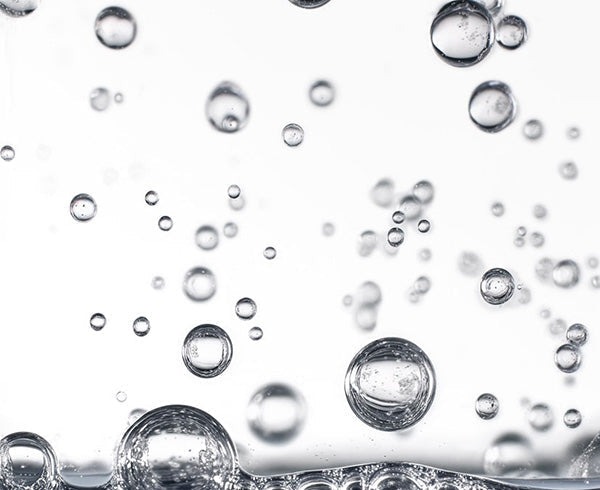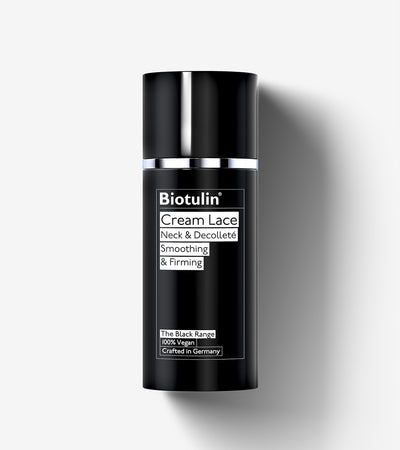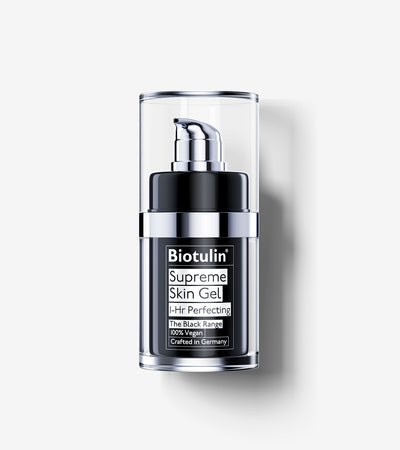In the world of skincare, Hyaluronic Acid (HA) has earned a reputation as one of the most beneficial ingredients available. Known for its ability to retain moisture and smooth fine lines, HA is a key element in a wide range of products and treatments, from topical serums to injectables, helping to restore a youthful, hydrated appearance.
What is Hyaluronic Acid?
Hyaluronic acid, also called hyaluronan or sodium hyaluronate, is a naturally occurring, gel-like substance found throughout the human body, especially in the skin, joints, and eyes. This unique molecule functions like a sponge, holding up to 1,000 times its weight in water. This water-binding ability is essential for keeping tissues hydrated and flexible. HA is classified as a polysaccharide, meaning it has a long, chain-like molecular structure that enables it to form a hydrating, protective layer around cells.
The hyaluronic acid used in cosmetics and skincare is typically produced through bacterial fermentation. This biotechnological process, which involves cultivating beneficial bacteria, creates a pure, hypoallergenic product that’s safe for a variety of skincare applications. HA’s unique properties make it an ideal ingredient for hydrating and firming the skin, reducing the appearance of wrinkles, and restoring volume lost due to aging.
What Are the Benefits of Hyaluronic Acid for the Skin?
Hyaluronic acid offers a wealth of benefits for the skin, making it a popular choice in both skincare and medical treatments:
- Moisture Retention: HA’s impressive water-holding capability provides long-lasting hydration, helping to keep skin smooth and supple.
- Firmness and Elasticity: By bolstering the skin’s structure, HA minimizes fine lines and wrinkles, restoring a plump, youthful look.
- Enhanced Healing: HA aids in tissue repair, helping to reduce scarring and speeding up wound healing.
- Barrier Protection: HA acts as a protective shield against environmental pollutants, which strengthens the skin’s barrier and enhances resilience.
These benefits make HA a staple in anti-aging products, where it works to hydrate, plump, and revitalize the skin. Incorporating HA into a skincare routine can improve skin texture, increase firmness, and promote a radiant glow.
Different Types of HA and Their Effects
In skincare, two main types of hyaluronic acid are often used due to their different molecular weights:
- High-Molecular-Weight HA: This large molecule remains on the skin’s surface, forming a hydrating barrier that prevents moisture loss. It’s ideal for smoothing fine lines and maintaining a dewy, plump appearance.
- Low-Molecular-Weight HA: These smaller molecules can penetrate deeper into the epidermis, providing more sustained hydration and structural support within the skin layers.
Many advanced skincare products incorporate both types of HA to maximize benefits, creating a layering effect that boosts hydration across the skin’s surface while enhancing elasticity and firmness in deeper layers.

Different Ways to Take Hyaluronic Acid
Hyaluronic acid is versatile and can be incorporated into one’s skincare and health regimen in various ways:
- Topical Application: HA is available in serums, creams, lotions, and even eye drops, delivering hydration at the skin’s surface. This method is ideal for maintaining moisture levels throughout the day, especially in dry or cold climates.
- Oral Supplements: Taken in pill or liquid form, HA supplements can support joint health and skin hydration from within. Studies indicate that ingested HA improves skin elasticity and hydration, promoting overall skin health over time.
- Injectables: HA fillers, administered by professionals, offer targeted treatment for deep wrinkles and volume loss, often used in areas like nasolabial folds, cheeks, and lips. HA injections provide immediate and natural-looking results, making them popular for facial contouring and anti-aging treatments.
Injectable HA is particularly effective for patients seeking rapid, noticeable results, as it delivers hydration and volume directly to areas that need it most.
How Does Hyaluronic Acid Work?
HA’s molecular structure allows it to bind with water, creating a “reservoir” that provides continuous hydration to the skin. This ability to attract and hold water is due to HA’s hydrophilic (water-loving) properties, making it an excellent humectant. When applied to the skin or injected, HA fills the spaces between collagen and elastin fibers, adding volume and smoothing out fine lines and wrinkles.
Furthermore, HA acts as a “scaffold” within the skin’s extracellular matrix, supporting collagen and elastin and contributing to skin firmness and elasticity. This natural support structure is key to maintaining a youthful appearance and slowing visible signs of aging.
Is Hyaluronic Acid Safe?
Hyaluronic acid is widely recognized as safe, with minimal risk of side effects. Topical and oral HA are well-tolerated by most individuals, including those with sensitive skin, and are generally considered safe for pregnant and nursing individuals, although it’s always best to consult a healthcare provider before introducing any new supplement.
Injectable HA fillers should be administered only by licensed professionals who have a thorough understanding of facial anatomy. While adverse reactions are rare, they can include redness, swelling, or mild bruising at the injection site. For individuals seeking HA fillers, a consultation with a qualified practitioner is essential for safe and effective results.

What Are the Uses of Hyaluronic Acid?
Beyond skincare, hyaluronic acid has therapeutic applications in multiple fields:
- Joint Health: HA injections can reduce arthritis pain and improve mobility by providing lubrication to the joints.
- Eye Care: HA is commonly used in eye drops to relieve dryness and irritation, retaining moisture in the eyes.
- Wound Healing: HA supports wound healing and reduces scarring, as it encourages skin repair and cellular regeneration.
- Intimate Care: HA-based creams and gels can help alleviate symptoms of vaginal dryness, particularly in menopausal individuals.
These diverse applications showcase HA’s therapeutic potential, from enhancing joint flexibility to supporting eye and skin health.
How is Hyaluronic Acid Used to Treat Wrinkles?
When used in skincare, HA smooths out fine lines by forming a hydrating barrier on the skin’s surface. Injectable HA fillers, however, are designed to treat more pronounced wrinkles by adding volume to the skin’s deeper layers. This filler technique can target specific areas of the face, such as the cheeks and nasolabial folds, to restore a youthful contour.
Different HA fillers cater to various aesthetic goals, from subtle plumping to more noticeable lifting effects. Professional injections allow for customized results that blend naturally with the skin’s texture.

At What Age Should I Start Using Hyaluronic Acid Serums & Creams to Combat the Signs of Aging?
Incorporating HA into a skincare routine in one’s mid-20s or early 30s can help maintain hydration and delay visible signs of aging. Since HA levels in the skin decrease with age, introducing HA serums and creams early can support long-term skin elasticity and firmness, preserving a youthful appearance.
How to Avoid Dangerous Hyaluronic Acid Injections
HA fillers should be administered by qualified professionals familiar with facial anatomy. While over 90% of HA filler complications are mild and transient, rare but serious outcomes like skin necrosis, vision impairment, and even cerebrovascular incidents can occur. Proper injection techniques and safety protocols are essential to mitigate these risks. If complications do arise, treatments like hyaluronidase (to dissolve HA), massage, and sometimes hyperbaric oxygen are used to address them.
Complications of HA Fillers and Management
Though generally safe, HA fillers can sometimes lead to complications:
- Hematoma: Bruising at the injection site, especially near the eyes, is common. Applying direct pressure can minimize bruising.
- Early-Onset Nodules and Lumps: Resulting from larger injections, these lumps are managed through massage or dissolved with hyaluronidase.
- Tyndall Effect: A bluish tint can occur if HA is injected too close to the skin’s surface. This effect is reversible with hyaluronidase or gentle massage.
- Malar Edema: Fillers in the tear trough area may cause swelling. Lower filler volumes and careful placement can help reduce this risk.
- Allergic Reactions: Rare but possible due to residual manufacturing proteins. Antihistamines or steroids can help manage these reactions.
- Infection: Though uncommon, infections require antibiotics, and abscesses may need drainage.
- Vision Loss: Vision impairment, though extremely rare, can occur if HA enters the vascular system.
Important Disclaimer
While hyaluronic acid products are widely recognized for their safety and effectiveness, complications can occasionally occur. Please note that we are not medical professionals, and this information is provided for general knowledge only. For more detailed information on the possible side effects and complications associated with hyaluronic acid fillers, we encourage readers to consult a healthcare provider and refer to credible medical resources.
For further insights on HA filler complications, management, and prevention, please refer to the following article from EyeWiki: Complications of Hyaluronic Acid Fillers.




